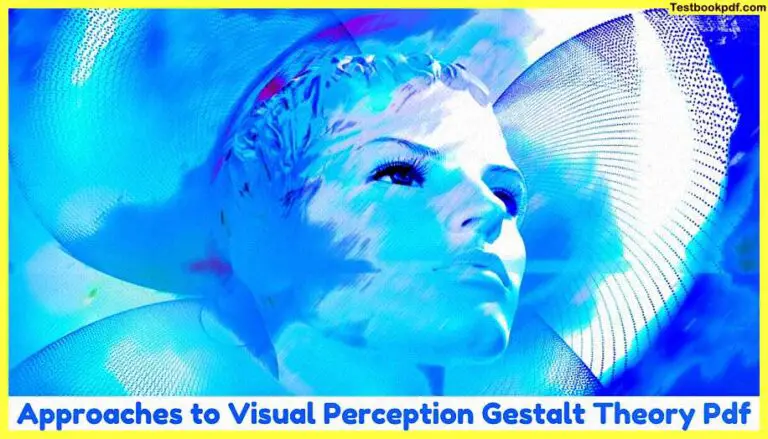Approaches to Visual Perception Gestalt Theory Pdf (Part-3)
Today we will continue about The various approaches to visual perception. Approaches to Visual Perception Gestalt Theory Pdf (Part-3), We perceive images according to the organization of the elements within rather than the nature of individual elements themselves. This is the famous, Gestalt approach to perception where they systematically study perceptual organization. It is often described in nutshell, “The whole is Greater than the sum of its parts”. In this article, we will focus on the organizational laws formulated by Gestalt researchers and close the series with the constructivist approaches to perception.
In last article you might remember we have been in the last two articles actually we have been talking about bottom up approaches to perception we have been talking about how the sensory experience from the environment can be used to construct good representations of the external world we have talked about the theory given by gibson which was the ecological approach to perception we’ve also talked in more detail about the theory given by david maher which was the 2.5 d sketch approach to perception now you would have noticed from the chapter on representation that these are not the only approaches to construct mental representations there is something else as well there’s something else basically includes those approaches to creating mental representations that basically operate with the assumption that the incoming sensory experience or incoming sensory input from the environment is not complete in itself and it needs to be filled up or say for example we actively interact and analyze the perceptual input coming from the external environment to create a good mental representation of the external world we’ll talk about such theories in today’s class now this whole concept of these kind of theories which are basically termed as top down theories started from helmholtz and helmholtz basically proposed a principle called the theory of unconscious inference.
Helmholtz’s theory of Unconscious Inference
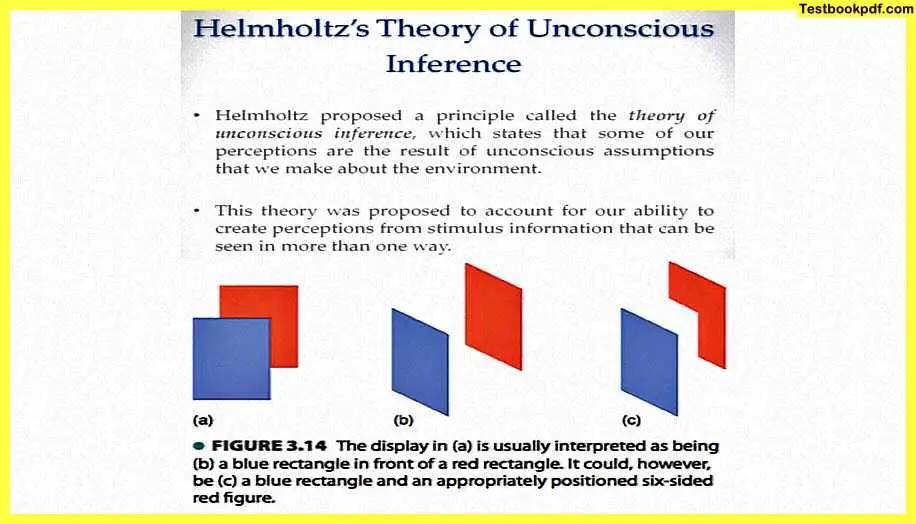
Now, this principle of unconscious inference states that some of our perceptions are a result of our unconscious assumptions that we have made about the environment so he says that we are actually almost unconsciously but almost all the time acting upon the input that the environment gives us and that is how we create uh mental representations or of this external world this theory was basically proposed to account for our ability to create perceptions from the stimulus information that can be seen in more than one way possible.
I will take this example here you can see this figure if you see the figure you will see one that blue rectangle is basically occluding a red rectangle behind this now there are two possible scenarios of how the figure might end up one is that the rectangle in the front that is the blue rectangle is covering another green rectangle or it could be that this blue rectangle is actually covering a surface which is not really a rectangle, it’s just filling in that gap now you might remember or you might have come across such kind of instances more often than not a funny instance come comes to my mind is when people start wearing just collars and not shirts that’s something you which you definitely might have seen somewhere in the television or somewhere but the point is we are actually assuming that probably case b is the more possible or is the more probable case than kc very few of us would actually see figure a and say that figure c is actually the reason behind figure A.
Likelihood Principle
This is exactly what Helmholtz was talking about how does Helmholtz explain this he basically put forward a principle called the likelihood principle, the likelihood principle states that we perceive the object that is most likely to have caused the pattern of the stimuli we received again we can go back to this figure which is the most likely in the b in b and c to have resulted in the perception like a with on the basis of your previous experiences with similar scenarios you will probably deduce that b is generally the most more likely option which has caused you to know us to see something like a this is basically what the principle of likelihood means and this is what Helmholtz said that we are doing a lot of unconscious inferences
Had I not really told you about the two possibilities b and c you would automatically have assumed that b is the cause of the perception that we got in a so Helmholtz that is why he described this process of perception as being similar to the process in solving a problem he says this problem is solved by a process in which the observer applies his or her knowledge about their world knowledge about the environment in order to infer what the object might be.
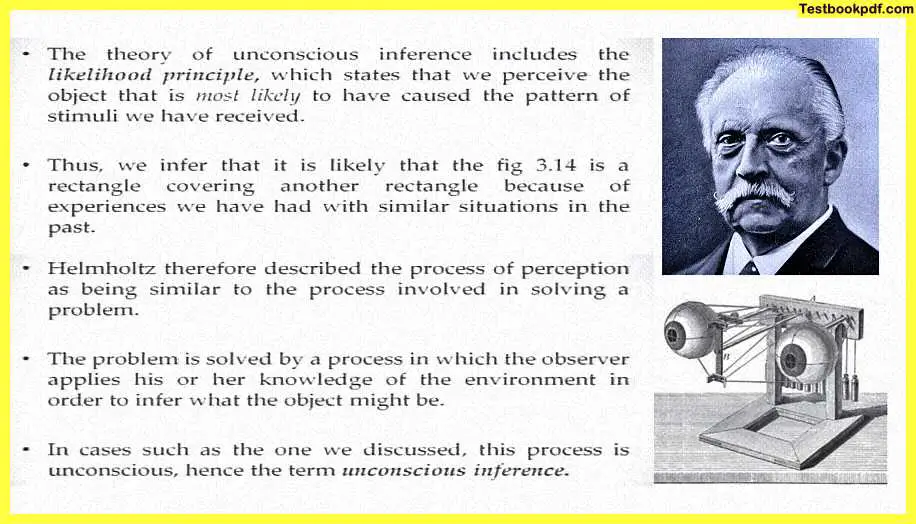
for exampl,e if you’re walking in a jungle and suddenly a rope like thing is slung on you is thrown on you you’re more likely to believe that maybe it could be a snake but say for example if you’re walking in your house and if you’re walking and that your house is in a place where snakes cannot be a probability you will more you’ll not really get so panicked you might think that it’s probably a wire or a rope that’s lying around in the house you have this memory you have this knowledge of the world you have and it’s kind of obvious to assume that this kind of knowledge will play a role in forming any kind of mental representations
so in cases such as the one we discussed in the one which I was really talking about this process is unconscious you’re not really consciously thinking and making those connections uh what you’re doing is called unconscious inference hence this theory is called Helman’s theory of unconscious inference let us take you to a different kind of an approach which is probably the even more famous approach on perception and the entire point of this approach can be summed up in the sentence here which says the whole is more than the sum of its parts.
Gestalt Approach to Perception
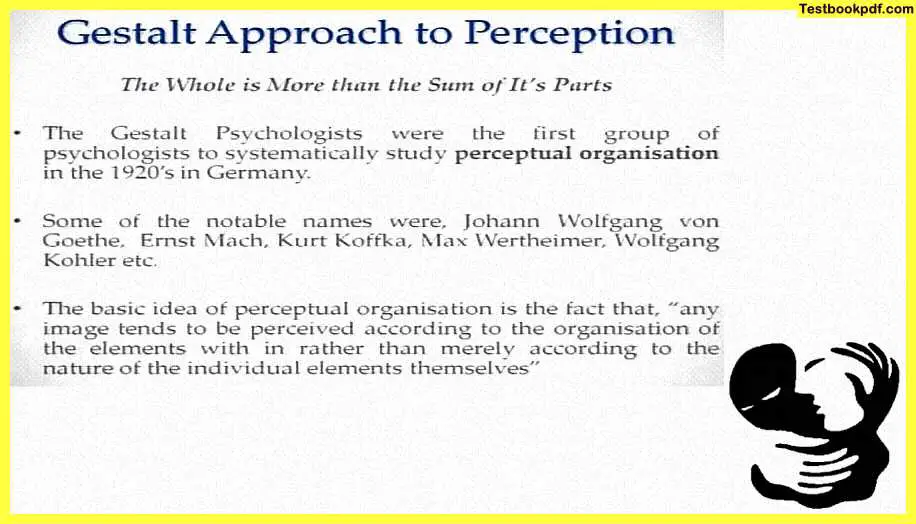
For example there are quite a few components if you just put the components together you might perceive something more than just the additive influence of those parts i explained this in a very short while before that i would just like to mention that this approach is basically put forward by a group of psychologists who have been known as the gestalt psychologists they were basically the first group of psychologists who systematically start studying perceptual organizations back way back in 1920s in germany some of those notable names you might have heard earlier or you might come across are those of johann wolfgang kafka max wertheimer wolf van kohler and others now the basic idea of perceptual organization now you should attend to this word perceptual organization it is basically saying that you are organizing your perception in a particular way it’s not that you are just passively attending to that to the sensory input you’re actually acting upon it you’re organizing it you’re making some meaning out of it okay i’ll demonstrate that in a in the next few slides but this basic idea of perceptual organization can be summed up in this sentence here that any image that tends to be perceived according to the organization of the elements within rather than merely according to the nature of individual elements.
So if you’re looking at the world you’re not basically looking at individual elements you’re looking at how those individual elements combine to create let us say an image of an object or let us say to create an image of a particular scene let us look at some principles or more as they have been called laws of the organization.
Laws of the Organization
Put forward by these gestalt psychologists now what do you see here do you see let us say random arrangement of cones or do you see a sphere that is basically covered on the surface by these cones let me tell you that there is no sphere here ok its just that arrangement of cones but aren’t you seeing the globe here are you seeing the sphere here what is it that is letting you see the sphere it is this ability to organize this arrangement of spheres this arrangement of cones that are letting you see this sphere this is basically called the law of closure.
Law of Closure
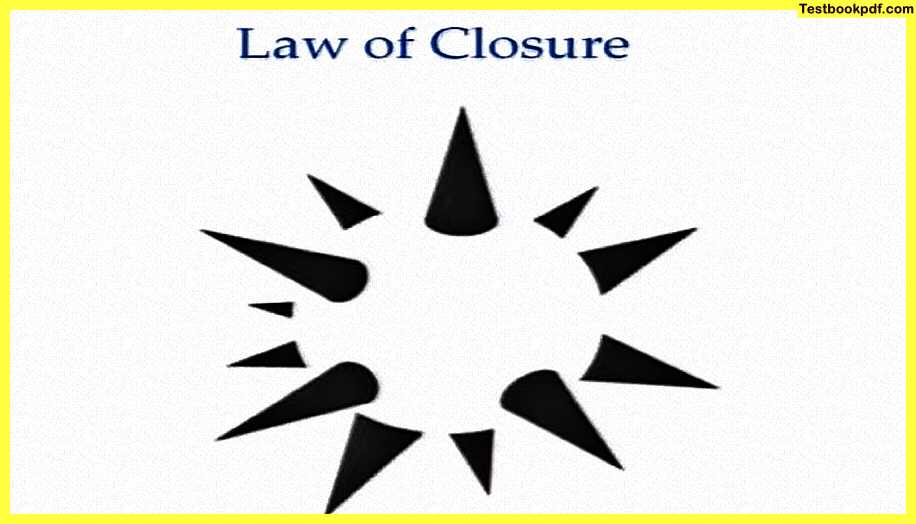
Saying that if there is this individual arrangement of a random arrangement of individual elements you would try and take that interpretation that forms a good uh a closure of a particular kind so here you can arrange them into a possible arrangement that is leading to uh formation of this sphere moving ahead now you can ask yourselves whether you are seeing eight pebbles or you are seeing groups of uh whether you are seeing four groups of two pebbles each now the point is in this what is happening is you are kind of already organizing the two pebbles which are close to each other so you are basically more likely to say that you are seeing four groups of pebbles rather than eight individual pebbles this is the law of proximity it says that i individual components that are put close together are organized as part of one object.
Law of Proximity
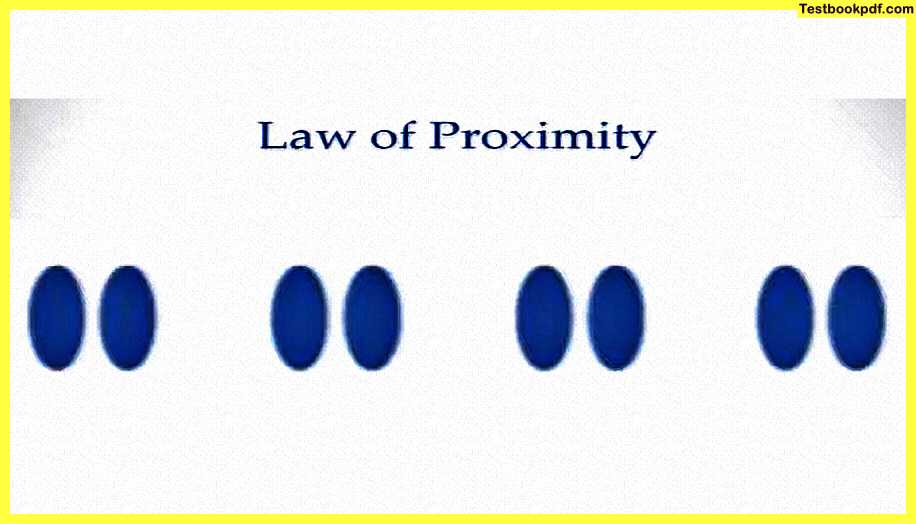
So you say I am seeing four pairs of pebbles here rather than eight individual pebbles this is called the law of proximity another law that the gestalt psychologist put forward is the law of similarity.
Law of Similarity
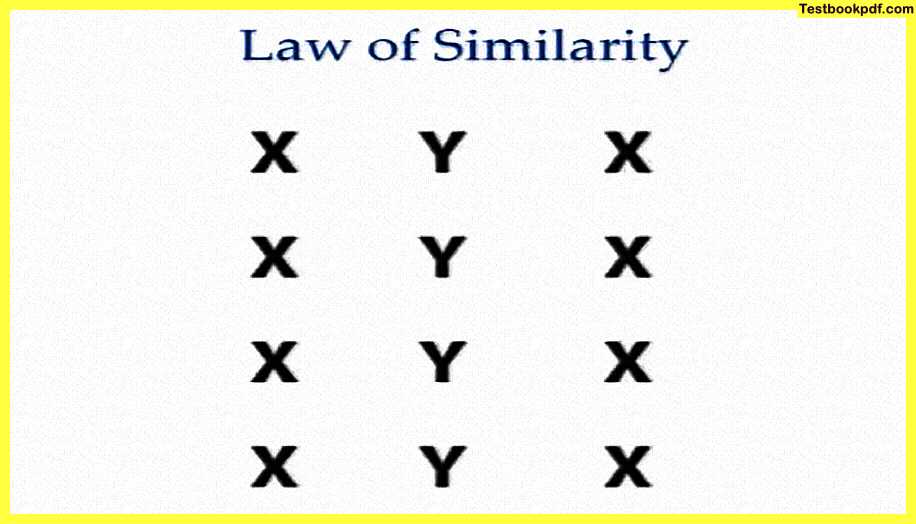
This basically says that you club similar-looking things together if I ask you what you seeing here you will say that you are seeing a row of two rows of x’s and one row of y, okay but if you actually kind of look at it you might two columns of x’s and one column five you might actually also be pressed upon to suggest that you are actually seeing four rows of x y x and you’re seeing four rows of x y x, okay but you’re not inclined to put y in the same row as x that is why you’re actually seeing this figure in columns rather than in rows because you’re kind of attaching x’s together and y is together and it’s giving you the impression of columns rather than four individual rows, here another law that they gave us is basically called the law of good continuation we are inclined to link individual elements so that they form a continuous percept rather than a broken percept.
Let us have a look at this figure here you will see that you might be able to see that there is this one line which is going from the end till the top and this another slanted line that is joining it i might argue on the other hand that did the line which started from the bottom here kind of bends down and there there’s another line which kind of joins slightly later but the more probable assumption that you will make is the one that the line that started at the bottom here kind of goes all the way up and somewhere on the fourth block uh this in a lowly slanted line is adding up.
law of good continuation
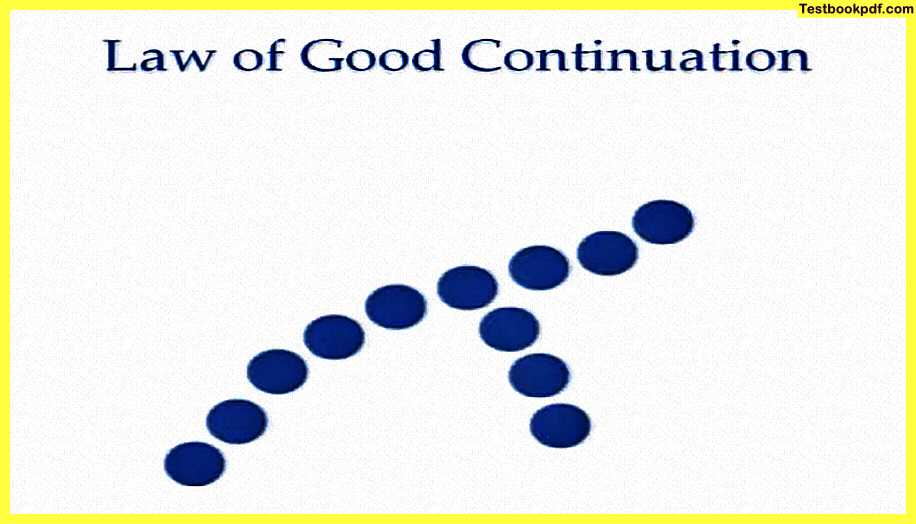
the law of good continuation is basically about that you kind of put individual elements together to form a continuous figure now the gestalt researchers and there are many other principles which have been given by them.
law of Pragnanz
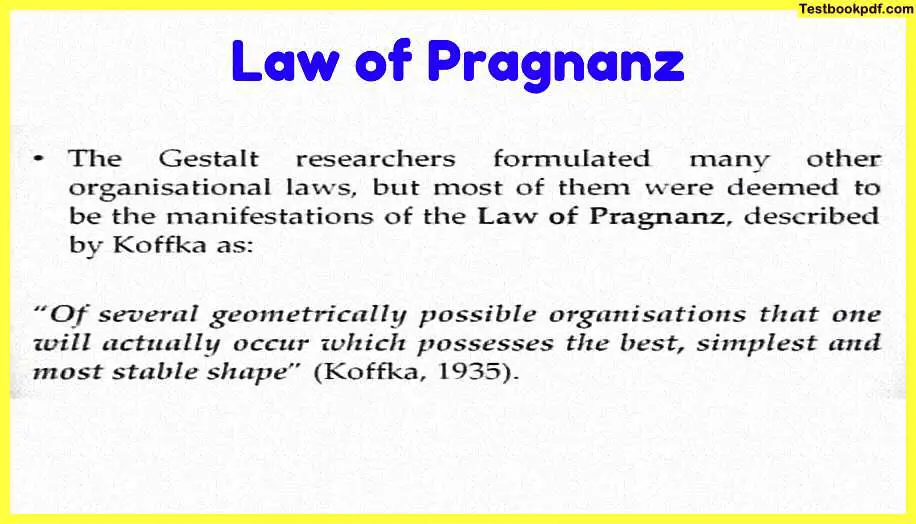
But the gestalt researchers formulated many other organizational laws most of them kind of were manifestations of a particular law which were known as the law of Pragnanz and the law of Pragnanz was defined by Kafka as several geometrically possible organizations that one will actually occur which will possess the best and the simplest and the most stable shape
So you might kind of have things like okay there are so many other elements but what you will actually make meaning out of or what you will actually make the figure out to be more often than not will be something that ends up in the simplest interpretation or the most stable interpretation of that visual input i can show you some examples say for example what is this, you are basically seeing, either blobs black blobs which are kind of randomly put together or you will put all of those together and see that the simplest interpretation of this say of the shape is that this is a giraffe.
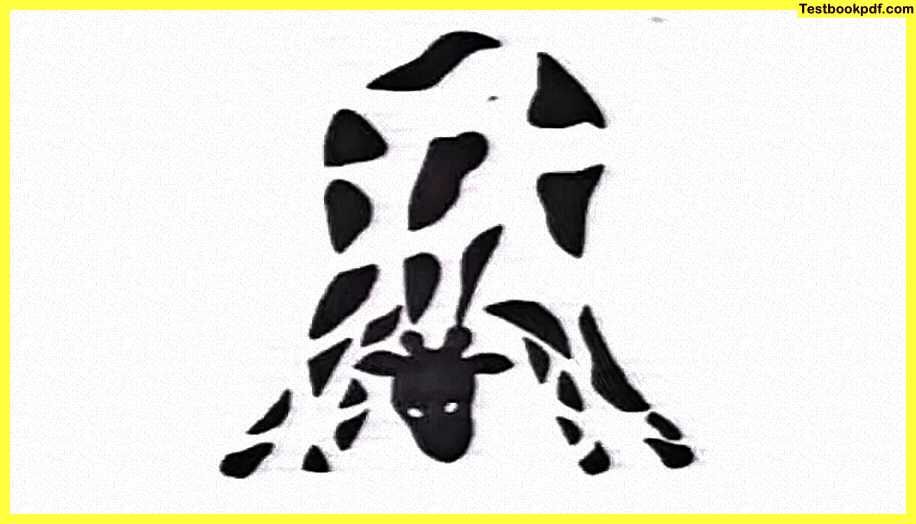
So what you are doing is you are kind of looking at all these individual elements separately and the most simple organization because we are not really used to seeing blobs just scattered around in a random fashion we are more used to seeing individual objects so you will say that this is a giraffe which is again the most probable interpretation of this kind of a sensory input what are you seeing a tree or you seeing individual elements. which look like people the simplest thing that you just see in the first instance is actually that of a tree.
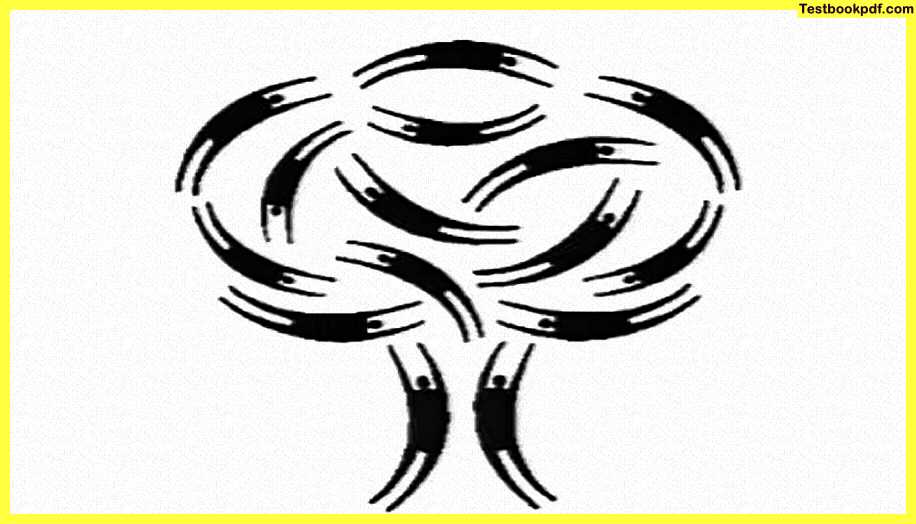
You are not really focusing on the individual elements that’s what the law of Pragnanz is supposed to tell us what do you see here do you see the continent of Africa and the two people or say for example what or you just see the two people and not the con you will take the simplest and the best assumption out of this now let us move slightly further can you tell me what are you seeing here some of you might have already guessed that this is actually a picture of a cow.
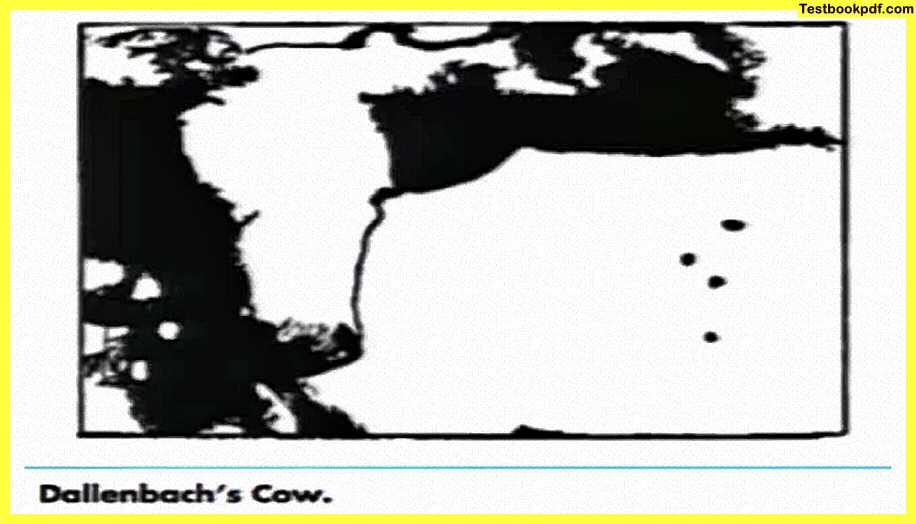
Now how did you really make out that this figure here resembled a cow what did you really use i would guess that you used your memory to make up that this particular organization of black and white, can be interpreted at least in the left part as the face of the cow and then the rest part can be taken as the torso of the curve now you see here that we are actually using our knowledge and our memory to make sense out of the sensory input or whatever the is give us or let us say whatever the ambient optic array might carry this approach is again an extension of what we have been talking about top down approaches these approaches basically are termed together as constructivist approaches to perception.
constructivist approaches to perception
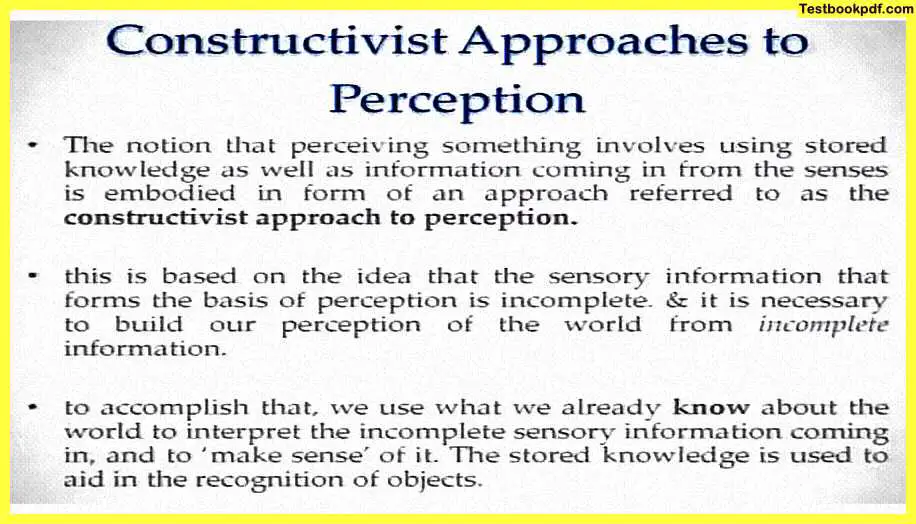
So the notion that perceiving something involves using stored knowledge as well as information coming in from the senses is embodied in this generic class of approaches called constructivist approaches to perception this is basically based on the idea that sensory information forms the basis of perception and is rarely complete or it’s actually incomplete and it is necessary for us to build the perception of our world from incomplete information that’s what you are getting say for example I am looking at figure here most figures are kind of occluded by each other but i am kind of making it up that there is this continuation I am using my knowledge of the world suppose for example you’re looking at a wall and there are a lot of photo frames on it you have this assumption that behind the photo frame the wall is still there it’s continuous isn’t it that.
So you’re kind of filling in up that information that is incomplete your ambient optic array is not carrying the information of the wall behind the picture it could just say that there’s a wall and then there’s a picture and there’s a rest of the wall so you use this knowledge.
So you accomplish this kind of creating this internal representation from this incomplete information uh you use what you already know about the world to interpret this incomplete sensory information coming in and you’re trying to make sense of it and this is basically the notion that stored knowledge can be used uh in order to aid recognition of objects create uh good representations of the external world this is what the constructivist approaches are about two of the foremost proponents of the constructivist approach were irvin rock and richard gregory.
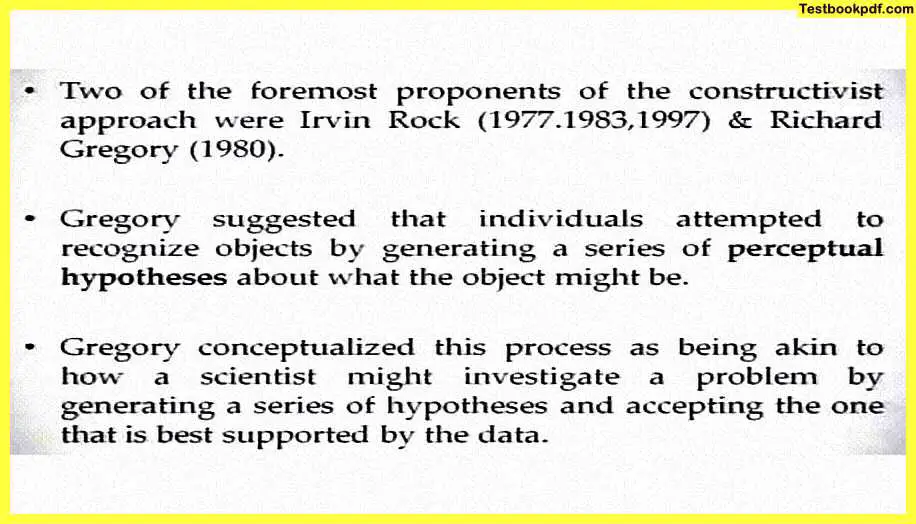
Gregory basically suggested that individuals attempt to recognize objects by generating a series of perceptual hypotheses ok about what the object might be say for example you are looking at somebody and that somebody is basically behind a particular bike you still assume that say for example whether it is a person whether let us say its a male or a female those different kind of hypothesis you are generating and you are using your knowledge of the world say for example there is somebody standing behind a car and you can just see parts of his body you use your knowledge of the world say for example if this person is wearing, sandals which females are supposed to wear you’ll kind of make out that i said this must be a female or say for example that person is wearing a pink uh a trouser or something you might kind of make that it probably more probably is a female than a male i mean you will be probably buying into a stereotype here but this is what the knowledge of the world will help you infer about that particular environment this is what is called generating multiple perceptual hypothesis and evaluating them and then choosing one of them which is best fit to that particular sensory input so gregory conceptualized this process as being akin to how a scientist might investigate a particular problem and how scientists work is that they generate few hypotheses and they actually accept the one that is best supported by the data okay and the data is obviously your sensory experience stored knowledge is assumed to be central to the generation of perceptual hypothesis because this is the what allows us to fill in the gaps in our sensory input there could there is an experiment i can think of in terms of auditory perception we will talk about auditory perception probably at some point in time but interesting experiment i can recall at the moment is there were these people who were put headphones and there was a sentence being said on the headphones and say for example the sentence was the legislators were talking about this particular thing at this point wherever the legislators word is there in the place of s where the s should have been there there is a huge coughing sound
So the person does not really listen to the s the thing is the legend and cuffing sound laters were talking about something after this experiment after the participants came out of the lab there was a person who asked them what did you exactly hear and everybody there said that we talk we heard about the legislators were discussing or something now they did not really listen the s at all but they actually knew this word and so they filled in up filled in that gap which was interrupted by cuffing by the s so this kind of effect is actually called phonemic restoration effect we might talk about this in more detail when you doing auditory perception but this is how the knowledge of the world might help you fill in the gaps in the sensory experience the influence of stored knowledge in guiding the perceptual hypothesis can be demonstrated by impoverished figures now again the kind of figures we already saw what is this is this uh can you make sense of what a picture this is about if you give it enough thought and if you kind of have some idea or say for example if you are living in a city near a beach you would automatically infer that this is basically a picture of a ship as you can see the chimney on the right side you can see water in the water at the bottom and you can see that there is this shape at the left which kind of resembles the front of the ship.
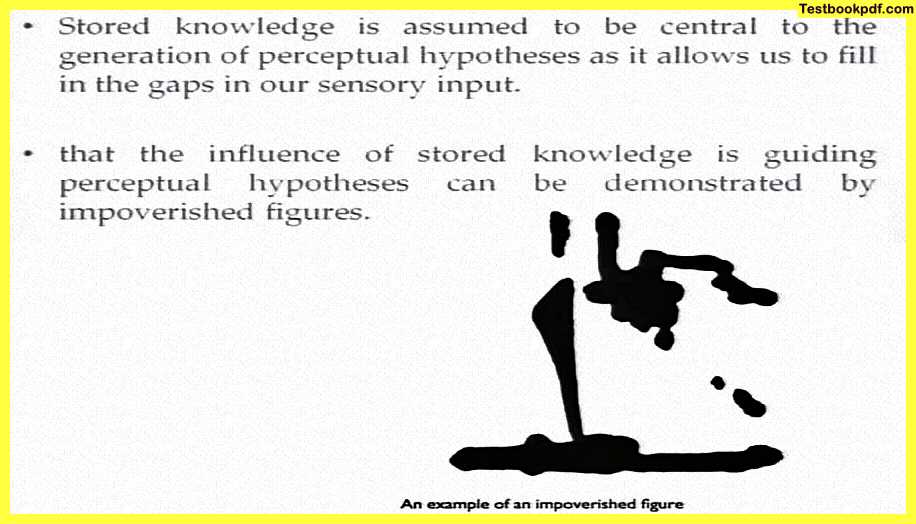
You have to know something if there if you are a person who’ve never really seen a ship earlier you don’t have any concept of ships you’ll not really be able to fill up this missing information and infer that this is a picture of a shape again the picture of the giraffe which we have already seen now the use of knowledge to guide our perceptual hypothesis may not always lead to correct perception you might kind of miss fill something as well sometimes this might lead you to towards accepting incorrect hypothesis resulting in false perception or resulting in mistakes about things okay that’s equally possible say for example this is the picture this is basically a picture of a mask of four kept in an egyptian museum if you kind of turn this inwards if you’re looking at the back of this mask you can already see that if you see the third panel you can already see that there seems to be an illusion of a shape there okay you’re trying to fill in the contours you’re trying to reverse the contours and that basically is giving you the impression that this is actually a face protruding outwards.
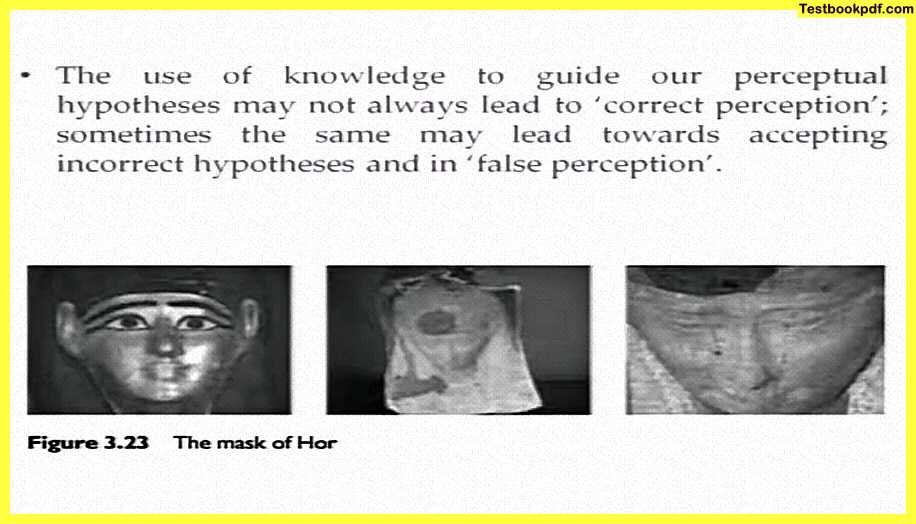
because you looking at the back of this figure and those are there are hollows in place of the nose and there are hollows in place of the eyes once you reverse it your brain tells you that the eyes are not really hollow or the nose is not really hollow you’re kind of filling this up and that is why in the third panel the shape starts to look like an actual shape though it is just the back of the mask.
This is what constructivist approaches to perception are actually arguing about now although the constructivist approach in general and Gregory’s theories in particular actually provide a really attractive explanatory framework for perception there are areas that are left vague in this particular theory for example Gregory does not really talk about how are we generating these hypotheses what is the data that is leading to generate these hypotheses and how do we know when to stop generating more hypothesis and what helps us decide that which is the right these are some of the areas which have not really been taken up in detail by the constructivist approaches in general although there is a lot of research going on in that sphere so there is obviously some evidence that perceptions from the outside world can be constructed using information flowing upwards from the senses and combined with the knowledge flowing down.

So obviously a good compromise between bottom-up approaches and top-down approaches are happening here but if you actually remember the last two articles this is entirely in contrast to what both gibson and mar had said for them uh the bottom up approach or the bottom-up processing or the sensory experience should be completely sufficient and enough to give you a nice representation of the external world ok that was about the constructivist approaches let us try and sum this up so we have examined alternative to what we have been talking about earlier we talked about alternative or top down approaches to perception we have seen the fact that in addition to the information from the sensory experience information already stored in the brain or the mind whatever you might call it shall be useful in making sense of the external environment especially in cases where impoverished information from the census is delivered we might conclude having looked into both bottom-up and top-down approaches that both of these or combination of these may actually be involved in constructing a perceptual representation of the external world thank you we’ll talk about object recognition and theories about object recognition in the next Article.
Read also:
Approaches To Visual Perception David Marr Theory (Part-2)
Approaches to Visual Perception Pdf (J.J Gibson’s theory)
Click here for Complete Psychology Teaching Study Material in Hindi – Lets Learn Squad
